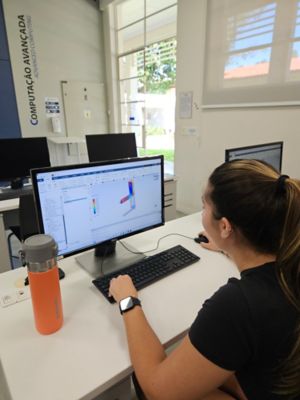The Design - Air Flow Turbulence Analysis on Tower Building | ANSYS Fluent
A tower is a tall structure, taller than it is wide, often by a significant factor. Towers are distinguished from masts by their lack of guy-wires and are, therefore, along with tall buildings, self-supporting structures.
Towers are specifically distinguished from "buildings" in that they are not built to be habitable but to serve other functions. The principal function is the use of their height to enable various functions to be achieved including visibility of other features attached to the tower such as clock towers; as part of a larger structure or device to increase the visibility of the surroundings for defensive purposes as in a fortified building such as a castle; as a structure for observation for leisure purposes; or as a structure for telecommunication purposes. Towers can be stand-alone structures or be supported by adjacent buildings or can be a feature on top of a large structure or building.
In this analysis, it has been tried to analyze the simulation of jet combustion chamber flow rates, using the ANSYS Fluent software.
Geometry & Grid
The geometry required for this analysis was generated by Ansys Design Modeler software. The meshing required for this analysis was also generated by Ansys Meshing software. The mesh type used in this analysis is unstructured. The total number of volume properties for geometry is 1,5331e+015 mm³.
Model
In this analysis, the k-epsilon (2 equation) turbulence viscosity model is used to check the fluid flow. The scalable wall function is used near the wall.
Boundary Condition
The flow of primary air input design modeler geometry for this analysis is considered as a velocity magnitude is 1 m/s. The turbulence of the design modeler is set with an intensity equal to 5 %. The turbulence viscosity ratio of the design modeler is set with a viscosity ratio of 10.
The flow output range is also considered as a pressure outlet for the flow output region and gauge pressure is equal to 0. The inner wall is also considered a Stationary Wall.
Discretization of Equations
In this analysis, high-resolution is used for the advection scheme of the basic settings. In this analysis, the first-order is used for turbulence numerics. In this analysis, the residual type of convergence criteria is RMS and the residual target of convergence criteria is 1.E-3.
The results are presented as turbulence eddy dissipation contours as well as volume rendering.
The Design Services
We also accept all CFD projects using ANSYS Fluent and ANSYS CFX. Our workshop has gathered experts in different engineering fields so as to ensure the quality of CFD simulations. One of our objectives is to boost the use of powerful computational fluid dynamics methods and also teach the engineers and those who seek professional knowledge in CFD.
ِDoing CFD projects will be faster and easier with our services. Call us for training in CFD applications and CFD packages. Our professional CFD engineers offer you professional consultation and technical supports for your academic CFD projects and industrial CFD projects. We offer you CFD learning, CFD project by ANSYS Fluent and ANSYS CFX, CFD consulting by ANSYS Fluent and ANSYS CFX, CFD service by ANSYS Fluent and ANSYS CFX, ANSYS Fluent and ANSYS CFX project, ANSYS Fluent and ANSYS CFX thesis, ANSYS Fluent and ANSYS CFX simulation, ANSYS Fluent and ANSYS CFX paper regeneration, ANSYS Fluent and ANSYS CFX academic project, ANSYS Fluent and ANSYS CFX industrial project, ANSYS Fluent, and ANSYS CFX research project, and low CFD Price. Moreover, we have years of experience in coordinating CFD projects. Therefore, we are ready to perform your CFD simulations in different engineering fields.




No comments:
Post a Comment